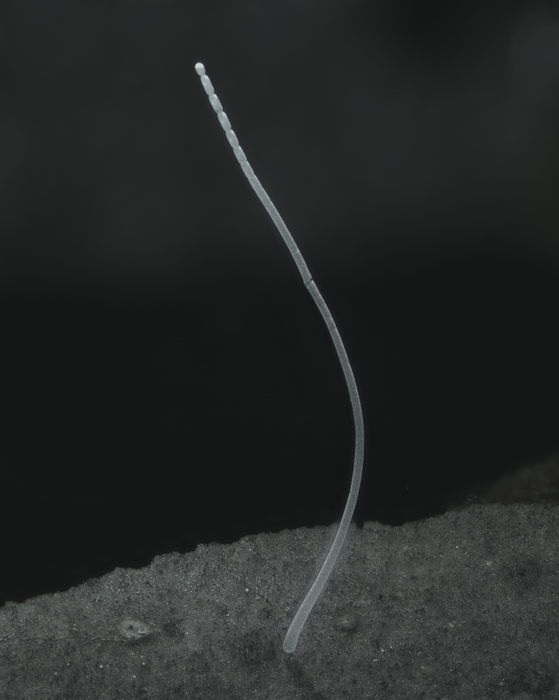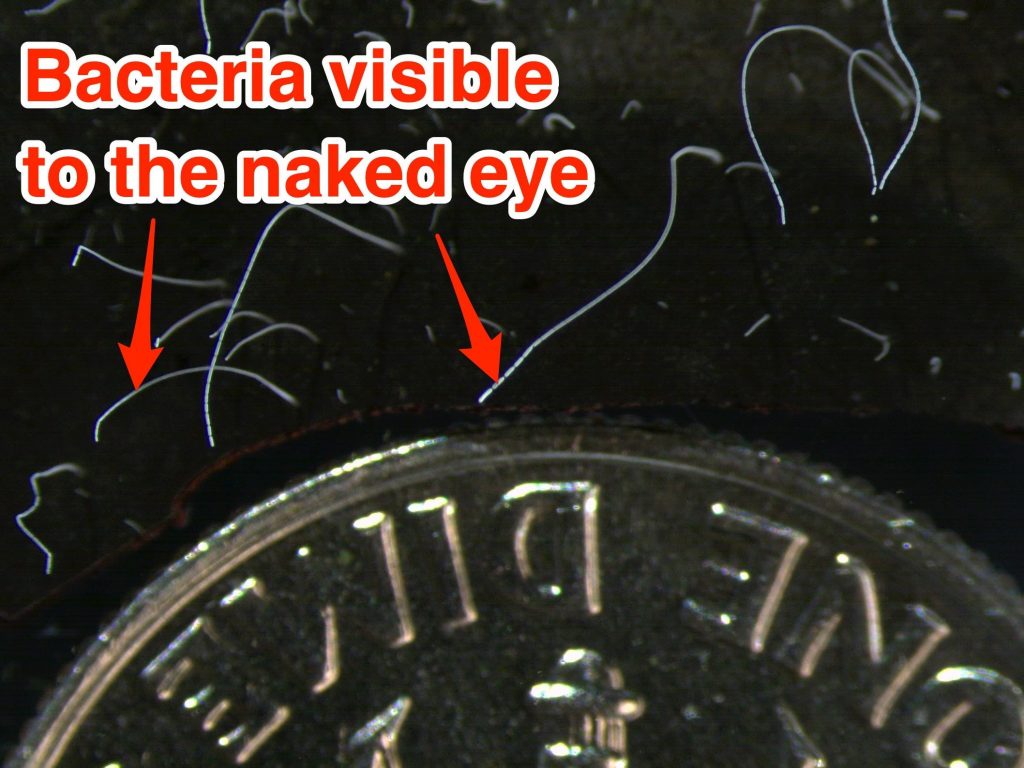- Scientists discovered a new species of bacteria visible with the naked eye.
- The bacteria, found in the Caribbean mangrove, is the biggest discovered to date.
- It has other peculiarities, like internal membranes organizing its insides.
Scientists discovered a new type of bacteria that grow to the size of a human eyelash, thousands of times larger than most bacteria and the biggest seen to date.
The thin, vermicelli-like bacteria grow up to 1 cm (0.4 inches) in length, per a press release accompanying the work.
That's about 5,000 times bigger than most others and about 50 times bigger than any other known bacteria.
"It would be like a human encountering another human as tall as Mount Everest," said Jean-Marie Volland, the lead author of the study, in the press release.
The findings, published in Science on Thursday, challenge the limits of what a bacteria looks like.
The bacteria, Thiomargarita magnifica, were found by chance in Carribean mangroves by Olivier Gros, a marine biology professor at the Université des Antilles in Guadeloupe.
"When I saw them, I thought, 'Strange,'" he said in the press release, recalling being unable to identify the white filaments floating on the surface of a leaf.

The bacteria are so large they are technically no longer microbes, which are defined by being invisible to the eye.
They have other odd features: further analysis revealed complicated internal structures separated by membranes, which is unusual for a bacterium.
Cells in humans and other organisms have membranes that organize their insides into compartments, like the nucleus that contains the DNA, or the endoplasmic reticulum which helps make proteins.
But bacteria tend not to have them. Their DNA, for instance, usually floats loosely inside the cells, not encased in a membrane.
But scientists found Thiomargarita magnifica has membranes that encase its DNA. Volland dubbed this new structure a "pepin" after the French word for seeds found in fruits.
